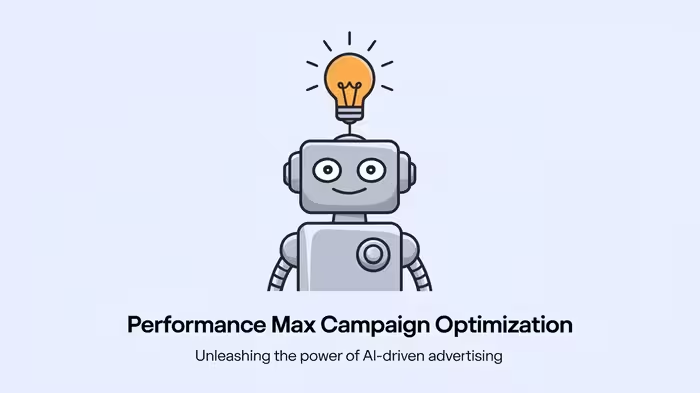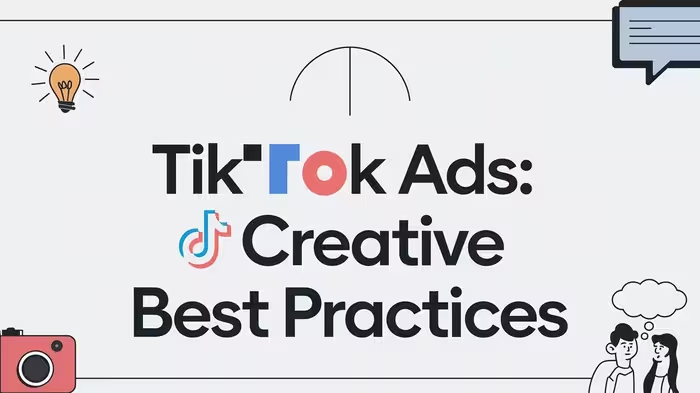In the ever-evolving world of digital advertising, staying ahead of the curve is crucial for success. Enter Performance Max campaigns – Google’s latest offering that’s revolutionizing the way we approach online advertising.
But like any powerful tool, its true potential lies in how well you wield it. In this comprehensive guide, we’ll dive deep into the art and science of Performance Max campaign optimization, equipping you with the knowledge and strategies to supercharge your digital marketing efforts.
Understanding Performance Max Campaigns
Before we jump into optimization techniques, let’s get a solid grasp on what Performance Max campaigns are all about.
Definition and Key Features
Performance Max is Google’s AI-powered campaign type that allows advertisers to access all of Google’s advertising channels from a single campaign. It’s designed to complement your keyword-based Search campaigns and uses machine learning to optimize performance across Google’s entire ad inventory.
Key features include:
- Cross-channel optimization
- Automated bidding and targeting
- Responsive ad creation
- Access to all of Google’s ad inventory (Search, Display, YouTube, Gmail, Discover, and Maps)
How Performance Max Differs from Other Google Ads Campaigns
Unlike traditional campaign types that focus on specific channels or ad formats, Performance Max takes a goal-centric approach. You set the objective, and Google’s AI does the heavy lifting to find the best opportunities across all available channels.
Benefits of Using Performance Max
- Simplified campaign management
- Increased reach across multiple channels
- Improved ROI through AI-driven optimization
- Access to new customer segments
- Time savings through automation
Setting Up Your Performance Max Campaign
The foundation of a successful Performance Max campaign lies in its setup. Let’s break down the key components:
Defining Campaign Goals
Your campaign goal is the north star that guides all optimization efforts. Are you aiming for:
- Sales?
- Leads?
- Website traffic?
- Local store visits?
Be crystal clear about your objective, as it will influence every other aspect of your campaign.
Asset Creation and Organization
Performance Max campaigns thrive on variety. You’ll need to provide:
- Text assets (headlines, descriptions)
- Image assets (various sizes and formats)
- Video assets (if available)
- Logo assets
Pro tip: Create multiple variations of each asset type to give the AI more options to work with.
Audience Signals and Targeting
While Performance Max uses automated targeting, you can provide audience signals to guide the AI:
- Customer lists
- Website visitors
- Similar audiences
- Demographics
- Interests and behaviors
Think of these as gentle nudges rather than strict rules – you’re giving the AI a starting point from which to expand.
Key Elements of Performance Max Optimization
Now that we’ve laid the groundwork, let’s dive into the meat of optimization:
Budget Management
Your budget is the fuel that powers your campaign. Consider:
- Starting with a conservative budget and scaling up based on performance
- Using shared budgets if you’re running multiple Performance Max campaigns
- Monitoring budget pacing to ensure consistent ad serving throughout your chosen time period
Bid Strategy Selection
Performance Max offers several automated bid strategies:
- Maximize Conversions
- Maximize Conversion Value
- Target CPA (Cost Per Acquisition)
- Target ROAS (Return On Ad Spend)
Choose the strategy that aligns best with your campaign goals and business model.
Asset Performance Analysis
Regularly review the performance of your assets:
- Which headlines are driving the most engagement?
- Are certain images outperforming others?
- How are your video assets contributing to conversions?
Use these insights to refine and improve your asset mix over time.
Audience Refinement
While Performance Max handles audience targeting automatically, you can still influence it:
- Analyze which audience segments are performing well
- Use this information to create new, more targeted audience signals
- Exclude underperforming or irrelevant audiences
Advanced Optimization Techniques
Ready to take your Performance Max campaigns to the next level? Let’s explore some advanced strategies:
Leveraging First-Party Data
Your first-party data is a goldmine for optimization:
- Upload customer lists to create lookalike audiences
- Use conversion data to inform bidding strategies
- Analyze customer lifetime value to prioritize high-value segments
Cross-Channel Insights Integration
Don’t silo your Performance Max insights:
- Use learnings from Performance Max to inform your Search and Display campaigns
- Apply insights from other channels to refine your Performance Max strategy
- Create a holistic view of your customer’s journey across all touchpoints
Seasonal Adjustments and Trend Adaptation
Stay agile and responsive to market changes:
- Adjust bids and budgets for seasonal peaks
- Create tailored assets for holidays and special events
- Monitor industry trends and adapt your strategy accordingly
Measuring Performance Max Campaign Success
What gets measured, gets managed. Here’s how to gauge the success of your Performance Max campaigns:
Key Performance Indicators (KPIs)
Focus on metrics that align with your campaign goals:
- Conversion rate
- Cost per conversion
- Return on ad spend (ROAS)
- Impression share
- Click-through rate (CTR)
Attribution Modeling
Understanding the customer journey is crucial:
- Experiment with different attribution models (last-click, first-click, linear, etc.)
- Use data-driven attribution for a more nuanced view of touchpoint impact
- Consider the interplay between Performance Max and your other marketing channels
Conversion Tracking Setup
Accurate conversion tracking is the bedrock of optimization:
- Implement Google Ads conversion tracking across all relevant pages
- Use value tracking to assign different values to different conversion types
- Consider offline conversion tracking for a complete picture of campaign performance
Troubleshooting Common Performance Max Issues
Even the best-laid plans can hit snags. Here’s how to address common Performance Max challenges:
Low Impression Share
If your ads aren’t showing as often as you’d like:
- Check if your budget is sufficient for your goals
- Review your asset quality and relevance
- Ensure your bid strategy aligns with your objectives
Poor Conversion Rates
If you’re getting impressions but not conversions:
- Analyze your landing page experience
- Review your audience signals for relevance
- Test different asset combinations
Budget Pacing Problems
If you’re burning through budget too quickly or not spending enough:
- Adjust your daily budget or switch to shared budgets
- Review your bid strategy and adjust if necessary
- Check for any seasonal factors affecting performance
Integrating Performance Max with Your Overall Marketing Strategy
Performance Max shouldn’t exist in a vacuum. Here’s how to make it play nice with your broader marketing efforts:
Aligning with Other Campaign Types
Create synergy between Performance Max and your other campaigns:
- Use Performance Max insights to inform keyword selection in Search campaigns
- Let Performance Max complement your manual efforts rather than replace them
- Consider using Performance Max for prospecting and traditional campaigns for retargeting
Brand Consistency Across Channels
Maintain a cohesive brand image:
- Ensure your Performance Max assets align with your brand guidelines
- Use consistent messaging across all marketing channels
- Create a seamless experience as customers move between channels
Complementing Non-Digital Marketing Efforts
Bridge the gap between online and offline:
- Align Performance Max campaigns with TV or radio ad schedules
- Use location extensions to drive foot traffic to physical stores
- Incorporate offline event data into your online strategy
Future Trends in Performance Max Campaigns
The only constant in digital marketing is change. Here’s what to watch for:
AI and Machine Learning Advancements
Expect even smarter optimization:
- More sophisticated audience modeling
- Enhanced predictive capabilities for bidding and budget allocation
- Improved creative optimization through AI-generated assets
Enhanced Automation Capabilities
Look for increased automation in:
- Campaign setup and structure
- Cross-channel budget optimization
- Automated reporting and insight generation
Expansion to New Ad Inventory
Keep an eye out for:
- Integration with emerging platforms and ad formats
- Expansion into new Google properties
- Potential partnerships with third-party ad networks
Best Practices for Ongoing Performance Max Optimization
Optimization is not a one-and-done task. Here’s how to keep your campaigns in top shape:
Regular Performance Reviews
- Schedule weekly or bi-weekly performance check-ins
- Look for trends and patterns over time
- Be prepared to make data-driven adjustments
Continuous Asset Refreshment
- Regularly introduce new creative assets
- Retire underperforming assets
- Test different asset combinations and themes
Staying Updated with Google Ads Changes
- Follow official Google Ads announcements and blogs
- Participate in industry forums and discussions
- Consider attending Google marketing events or webinars
Case Studies: Successful Performance Max Optimizations
Let’s look at some real-world examples of Performance Max success:
E-commerce Success Story
An online retailer saw a 30% increase in ROAS after implementing the following optimizations:
- Leveraging customer purchase history for audience signals
- Creating product-specific asset groups
- Implementing smart bidding with target ROAS
Lead Generation Campaign Improvement
A B2B software company boosted lead quality by 25% through:
- Refining audience signals with intent data
- Creating thought leadership video content for YouTube placements
- Using offline conversion tracking to optimize for high-value leads
Local Business Growth Through Performance Max
A multi-location dental practice expanded its customer base by:
- Utilizing location extensions to drive foot traffic
- Creating localized ad assets for each market
- Implementing call tracking to capture phone leads
Conclusion
Performance Max campaigns represent a paradigm shift in digital advertising, offering unprecedented reach and automation. By mastering the art of optimization – from initial setup to ongoing refinement – you can harness the full potential of this powerful tool.
Remember, the key to success lies in continuous learning, testing, and adaptation. Embrace the power of AI-driven advertising, but never lose sight of the human insight and creativity that drive truly exceptional marketing.
As you embark on your Performance Max journey, stay curious, remain agile, and always keep your ultimate business goals in sight. The future of digital advertising is here – are you ready to maximize your performance?
FAQs
- How long does it take to see results from a Performance Max campaign?
While results can vary, many advertisers see initial performance indicators within the first 2-4 weeks. However, it’s important to allow 6-8 weeks for the AI to fully optimize and for you to gather meaningful data for decision-making. - Can I use Performance Max campaigns for B2B advertising?
Absolutely! Performance Max can be effective for B2B advertising, especially when combined with strong audience signals and high-quality, industry-specific assets. Focus on creating content that speaks to your B2B audience’s pain points and decision-making processes. - How does Performance Max handle brand safety?
Performance Max uses Google’s standard brand safety measures. You can further enhance brand safety by using brand suitability controls, negative keywords (at the account level), and by carefully curating your asset library to ensure it aligns with your brand values. - Is it better to have one broad Performance Max campaign or multiple targeted ones?
The answer depends on your specific goals and product/service diversity. Generally, if you have distinct product lines or target markets, creating separate Performance Max campaigns can allow for more tailored assets and audience signals. However, for businesses with a single, cohesive offering, a broader campaign might be more efficient. - How can I prevent Performance Max from cannibalizing my existing Search campaigns?
To minimize cannibalization:
- Use negative keywords at the account level to prevent Performance Max from competing on your most important branded terms
- Create clear separation in goals and target audiences between your Performance Max and Search campaigns
- Regularly review search term reports to identify any overlap and adjust accordingly


